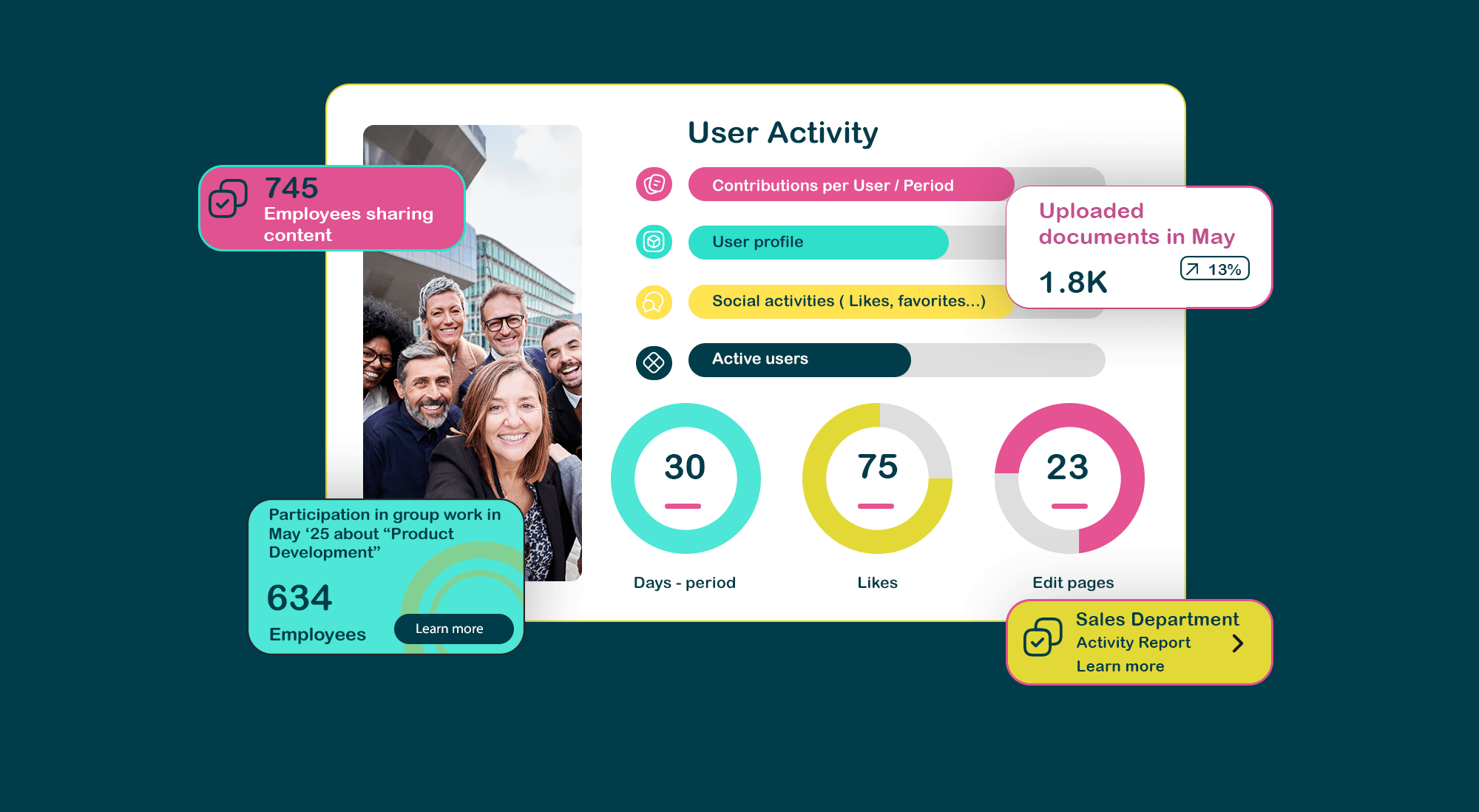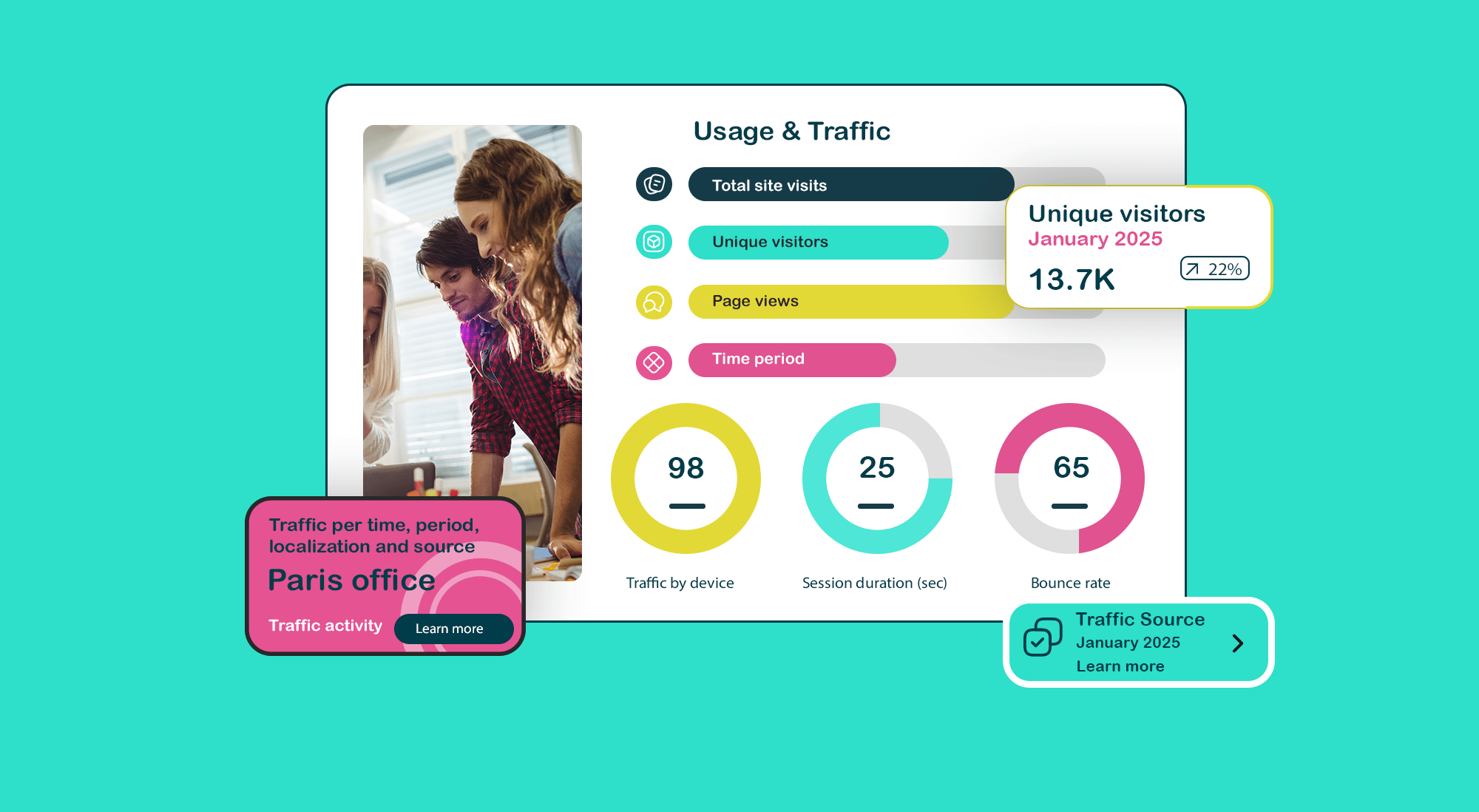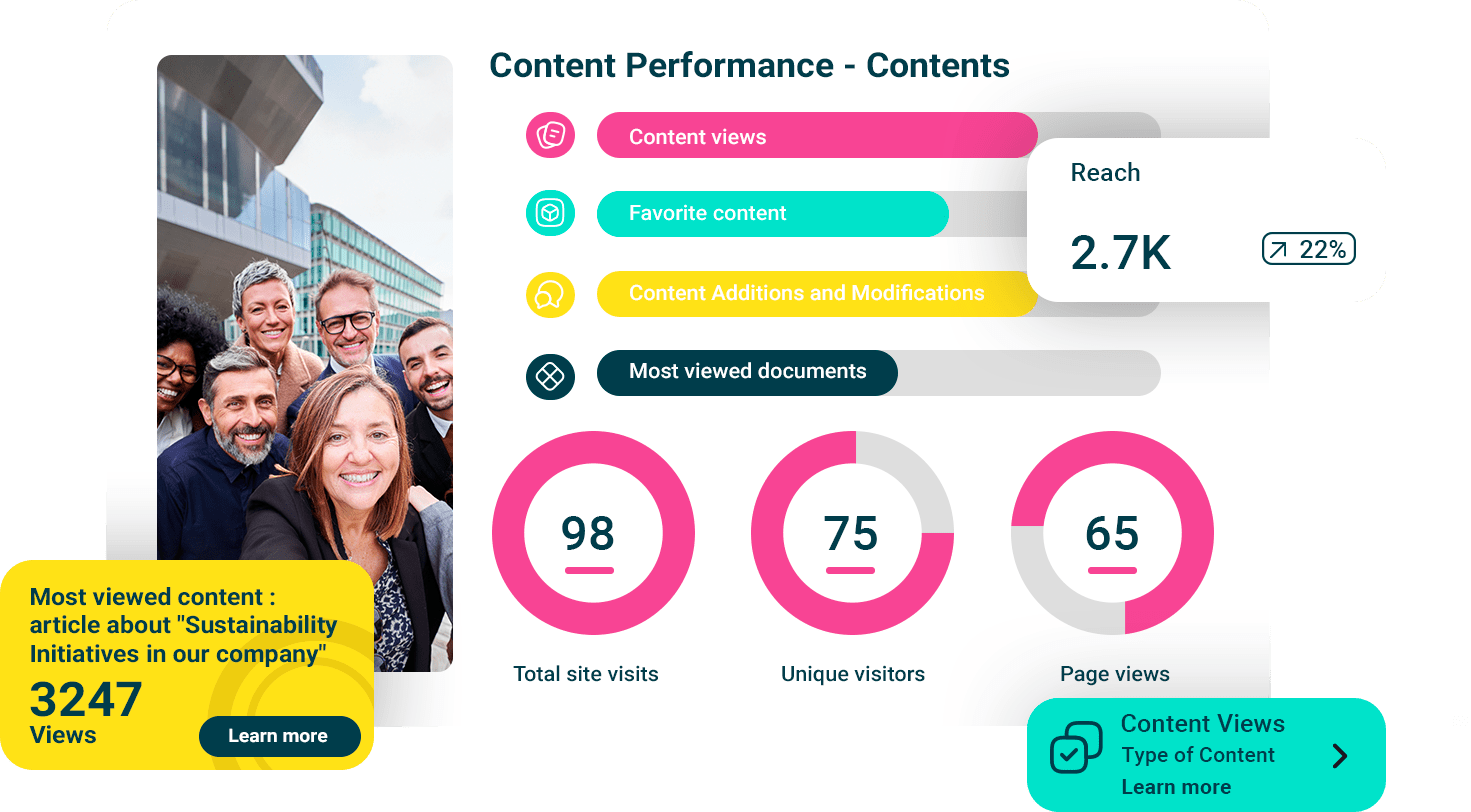Why is it important to measure the effectiveness and efficiency of your digital workplace? Why measure ROI?
If your intranet is the hub of your internal communications, then measuring its impact is like checking the health of your organization’s central nervous system. Without visibility, you’re navigating blind. ROI isn’t just about cost versus benefit, it’s about understanding whether your digital workplace (DW) is supporting strategic goals like employee engagement, productivity, and knowledge sharing. When leaders ask, “Is this investment worth it?”, having data-backed answers based on clear performance indicators gives you the confidence to say, “Yes, and here’s how.”
What methodologies and frameworks already exist?
There’s no shortage of frameworks to guide internal communications measurement—from the Internal Communication Scorecard, to OKRs and KPIs, to the ICE Model (Impact, Communication, Engagement). Each provides a structure to evaluate reach, relevance, and results. Combining qualitative feedback (surveys, sentiment analysis) with quantitative data (page views, time spent, click paths) creates a multidimensional picture. The key is not to overcomplicate it. Start with frameworks that align with your business priorities and scale them as your intranet evolves.
Measurement is key to improving your digital workplace, engagement levels, and adapting your platform to the organization’s use cases and digital maturity
Your digital workplace should grow with your organization, not just be launched and forgotten. Tracking engagement metrics, like search queries, bounce rates, and active contributors, reveals how employees interact with your intranet over time. These insights help tailor your platform to real-world use cases. Whether that’s smoother onboarding, faster access to knowledge, or better collaboration across departments. Measurement is the engine behind personalization, adoption, and agility, especially as your digital maturity evolves.
Measure and analyze both the “visible” and the “invisible”: what to track for intranet success
Page views and logins only tell part of the story. To truly understand what’s working, you need to dig deeper into both the visible and the invisible layers of your digital workplace. That includes understanding content performance (Are employees reading or just skimming? Are they clicking through or exiting?) as well as behavioral patterns like passive consumption versus active engagement. Track not just the loudest voices, but also those who remain silent. Silence might mean satisfaction…or it might mean disengagement. Your analytics should help you find out which.
Identify what’s working and what’s not. Align analytics with business goals and use cases
The power of analytics lies in their ability to tell a story: what content is driving value, which features are underused, which pages lead to action. But without context, data is just noise. That’s why your intranet analytics dashboard should reflect your business goals—from boosting cross-department collaboration to ensuring HR updates are actually read. When metrics map to specific use cases, you can double down on what works and pivot fast when something falls flat.
Help justify the investment in an intranet to leadership in a clear and tangible way
You know the intranet is essential, but how do you convince the C-suite? Analytics are your best ally here. Instead of vague claims like “people seem to like it,” show leadership how the intranet is improving employee retention, accelerating decision-making, or reducing time spent searching for information. When you can draw a straight line from your internal communication efforts to business outcomes, you move from cost center to value driver. It’s about translating clicks and views into meaningful impact.
How to turn insights into actionable decisions that move the business forward
Insight without action is just data decoration. The real value of intranet analytics comes from transforming metrics into decisions. Maybe your analytics show low engagement with CEO updates—do you adjust the channel, format, or frequency? If onboarding content is hard to find, do you redesign navigation or launch a targeted homepage banner? Regular reviews of your data should lead to small, iterative improvements that keep your intranet aligned with employee needs and business goals. That’s how internal comms becomes a strategic function and not just a support one.
Where does Powell fit into all this?
Proving the impact of your intranet shouldn’t feel like a guessing game—and with Powell, it isn’t. Powell’s powerful analytics dashboards give you a clear view of exactly how your teams are engaging with your content, where they’re spending time, and what’s truly driving their productivity. It’s not just about tracking clicks, it’s about aligning those actions with your strategic goals. Whether it’s boosting employee engagement, accelerating decision-making, or driving knowledge sharing, Powell shows you where to focus to get the most out of your digital workplace. And when it comes time to prove ROI to leadership, Powell makes it easy. With real-time data, clear business insights, and actionable reporting, you can confidently demonstrate the value of your intranet investment without sifting through endless reports. It’s not just analytics, it’s intelligence that makes your intranet smarter and your business stronger.
Conclusion: Building a culture of continuous improvement through analytics
In a fast-moving workplace, internal communications can’t afford to be static. By embracing intranet analytics not as an afterthought, but as a strategic asset, you empower your team to stay agile, informed, and aligned. From tracking engagement metrics to understanding content performance, and from aligning analytics with business goals to justifying your investment to leadership, each data point becomes an opportunity to evolve. The goal isn’t just to prove that your intranet works; it’s to make it work better every single day. Because when you measure what matters, you don’t just inform decisions, you shape the future of how your people connect, collaborate, and succeed.







